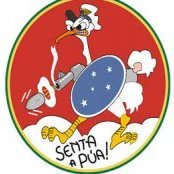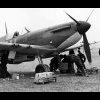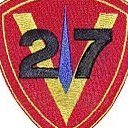-
Posts
320 -
Joined
-
Last visited
Profile Information
-
Gender
Male
Recent Profile Visitors
7,830 profile views
-
 Rocat reacted to a post in a topic:
1/18 Scale P-51B 3D Print Build
Rocat reacted to a post in a topic:
1/18 Scale P-51B 3D Print Build
-
 KiwiZac reacted to a post in a topic:
1/18 Scale P-51B 3D Print Build
KiwiZac reacted to a post in a topic:
1/18 Scale P-51B 3D Print Build
-
 JayW reacted to a post in a topic:
1/18 Scale P-51B 3D Print Build
JayW reacted to a post in a topic:
1/18 Scale P-51B 3D Print Build
-
I mean it when I say it, and I can't stress this enough, she is ABSOLUTELY GLORIOUS! Re: the sway brace pads, there were large, square hardwood pads which were attached to the ends of the sway braces on -B's and early -D's, subsequently followed by smaller, round metal pads that were incorporated into the sway brace arm itself on later -D variants. Here's a page from the E&M manual that shows both versions of pads and the plumbing for both 75- and 110-gallon droppable combat tanks. PS - PM sent, Jay!
-
 TAG reacted to a post in a topic:
1/18 Scale P-51B 3D Print Build
TAG reacted to a post in a topic:
1/18 Scale P-51B 3D Print Build
-
 TAG reacted to a post in a topic:
1/18 Scale P-51B 3D Print Build
TAG reacted to a post in a topic:
1/18 Scale P-51B 3D Print Build
-
 TAG reacted to a post in a topic:
1/18 Scale P-51B 3D Print Build
TAG reacted to a post in a topic:
1/18 Scale P-51B 3D Print Build
-
 TAG reacted to a post in a topic:
1/18 Scale P-51B 3D Print Build
TAG reacted to a post in a topic:
1/18 Scale P-51B 3D Print Build
-
 TAG reacted to a post in a topic:
Tamiya 1/48 P-47D-22, s.n. 42-26044, HV-Z ‘’Silver Lady’’ finished!!!
TAG reacted to a post in a topic:
Tamiya 1/48 P-47D-22, s.n. 42-26044, HV-Z ‘’Silver Lady’’ finished!!!
-
 TAG reacted to a post in a topic:
Tamiya 1/48 P-47D-22, s.n. 42-26044, HV-Z ‘’Silver Lady’’ finished!!!
TAG reacted to a post in a topic:
Tamiya 1/48 P-47D-22, s.n. 42-26044, HV-Z ‘’Silver Lady’’ finished!!!
-
 TAG reacted to a post in a topic:
Tamiya 1/48 P-47D-22, s.n. 42-26044, HV-Z ‘’Silver Lady’’ finished!!!
TAG reacted to a post in a topic:
Tamiya 1/48 P-47D-22, s.n. 42-26044, HV-Z ‘’Silver Lady’’ finished!!!
-
 TAG reacted to a post in a topic:
F4U-1D Cowl Interior Color?
TAG reacted to a post in a topic:
F4U-1D Cowl Interior Color?
-
 TAG reacted to a post in a topic:
Zoukei Mura FW-190A-4 JG 54
TAG reacted to a post in a topic:
Zoukei Mura FW-190A-4 JG 54
-
 TAG reacted to a post in a topic:
Zoukei Mura FW-190A-4 JG 54
TAG reacted to a post in a topic:
Zoukei Mura FW-190A-4 JG 54
-
 JayW reacted to a post in a topic:
1/18 Scale P-51B 3D Print Build
JayW reacted to a post in a topic:
1/18 Scale P-51B 3D Print Build
-
 Gazzas reacted to a post in a topic:
1/18 Scale P-51B 3D Print Build
Gazzas reacted to a post in a topic:
1/18 Scale P-51B 3D Print Build
-
Dude, Jay, please please PLEASE do a Jug next!
-
 Mal_Belford reacted to a post in a topic:
1/18 Scale P-51B 3D Print Build
Mal_Belford reacted to a post in a topic:
1/18 Scale P-51B 3D Print Build
-
 JayW reacted to a post in a topic:
1/18 Scale P-51B 3D Print Build
JayW reacted to a post in a topic:
1/18 Scale P-51B 3D Print Build
-
 geedubelyer reacted to a post in a topic:
1/18 Scale P-51B 3D Print Build
geedubelyer reacted to a post in a topic:
1/18 Scale P-51B 3D Print Build
-
Yo Jay, CONGRATS on reaching this huge milestone, Cripes a' Mighty is looking mighty indeed! A modeling tour de force, you and Peter Castle are leading the charge on the 3D front and it is absolutely glorious to watch, cannot wait for the next installments to see you work your magic on the empennage. - T
-
 Serkan Sen reacted to a post in a topic:
1/18 Scale P-51B 3D Print Build
Serkan Sen reacted to a post in a topic:
1/18 Scale P-51B 3D Print Build
-
 clarkis reacted to a post in a topic:
1/18 Scale P-51B 3D Print Build
clarkis reacted to a post in a topic:
1/18 Scale P-51B 3D Print Build
-
Very cool clip, the AI narration kind of sucks but getting the story straight from the horse's mouth is pretty epic. Gotta love Ward's channel, so much good content!
-
Here's a 398th bird on a wartime mission with its chin turret and fairing removed, in case anyone wanted to see what that looked like. Note one of the other Forts also has its turret removed while the third plane still has it installed.
-
ABSOLUTELY GLORIOUS!
-

Kotare Spitfire Mk.Vb (Early) available to pre-order.
TAG replied to Will Hunter's topic in LSP Discussion
Gabby also flew Spits -albeit Mk. IX's- doing Channel sweeps for 315 Squadron circa 1943! -
Voilà! As you can see, they could come in different shades of IG or DDG or even in YZC, so feel free to add some interest to your cockpits. HTH, - T
-
Ask and ye shall receive!
-
Hey, Dennis - Thomaz
-
My sincerest condolences, Kev, mom's really are the best. Keep your chin up, celebrate her life and stay strong. - Thomaz
-
HBD, Big Jay, here's to many happy and healthy returns!





